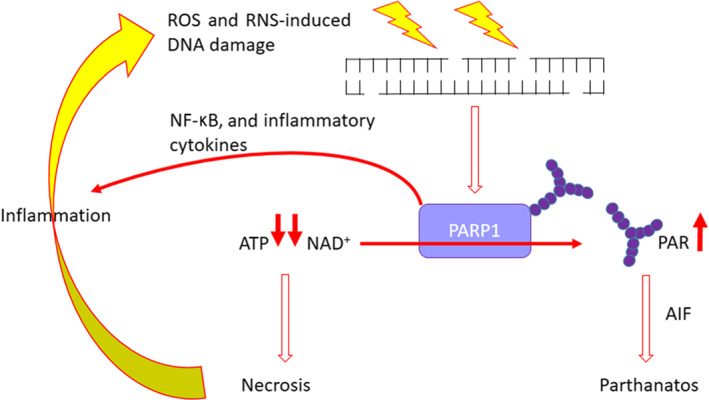FIGURE 1.

The role of PARP in inflammation‐induced tissue damage. Infection‐induced ROS and reactive nitrogen species (RNS) cause DNA strand breakage. This activates PARP1 and PARP2, which generates PAR that can lead to apoptosis‐inducing factor (AIF) release leading to cell death by parthanatos. This reaction also depletes NAD+ and subsequently ATP leading to necrosis, which causes further inflammation and activation of immune cells (e.g. macrophages) leading to more ROS and RNS generation and, so, a vicious cycle of further PARP activation and downstream consequences. PARP activation also stimulates the production of inflammatory cytokines, such as IL‐6, further contributing to this vicious cycle. All of this can essentially be blocked by the use of a PARPi
